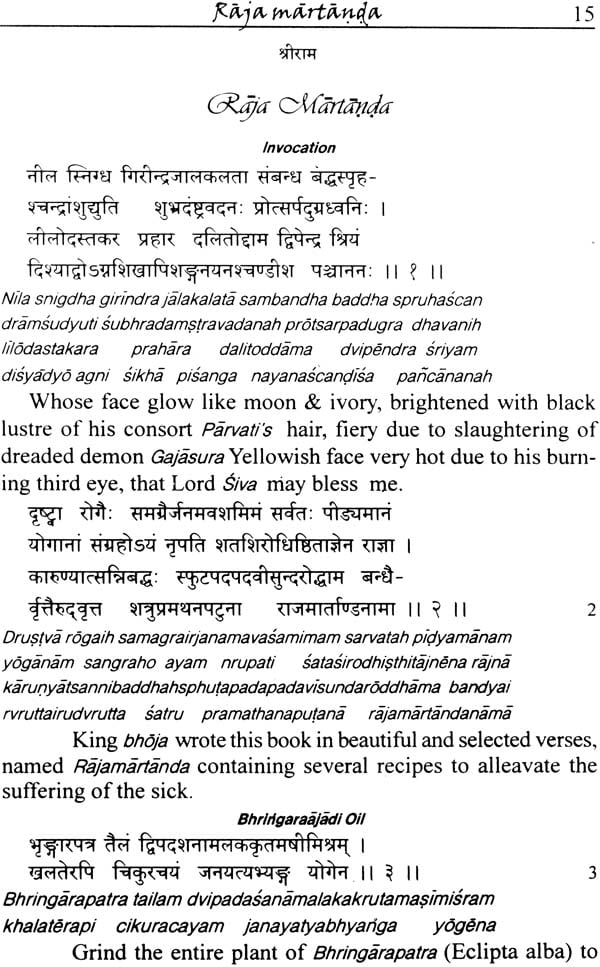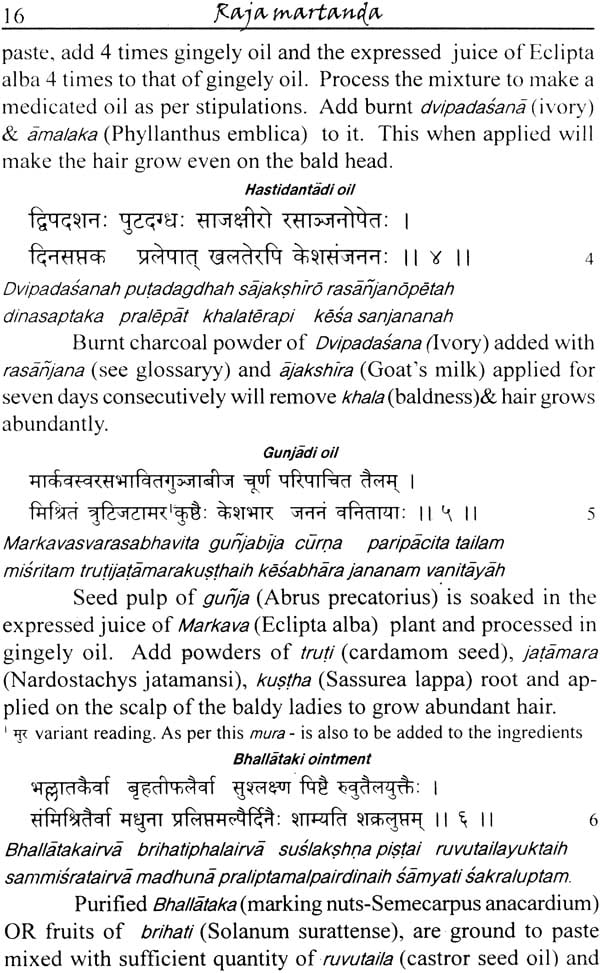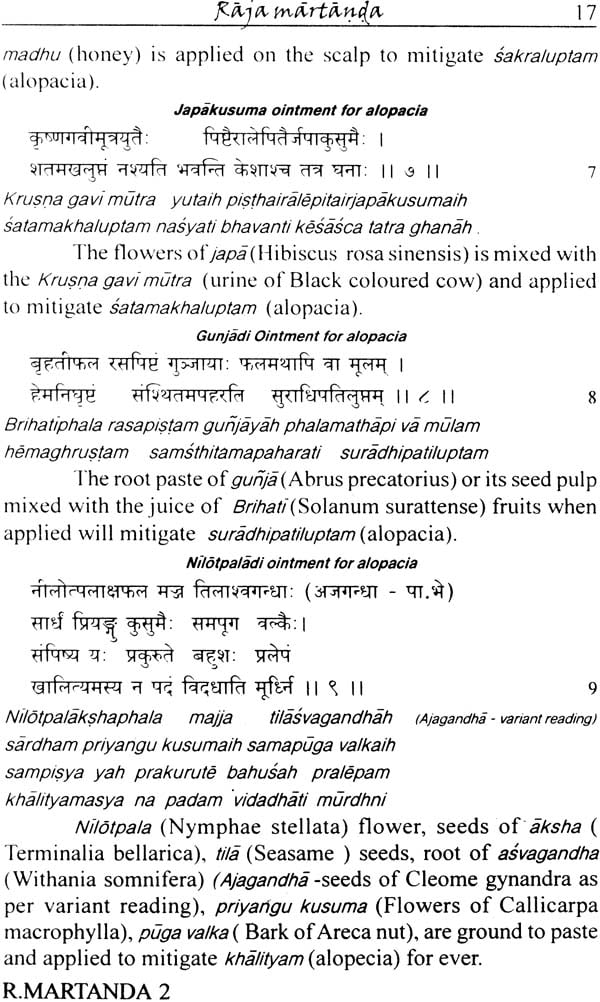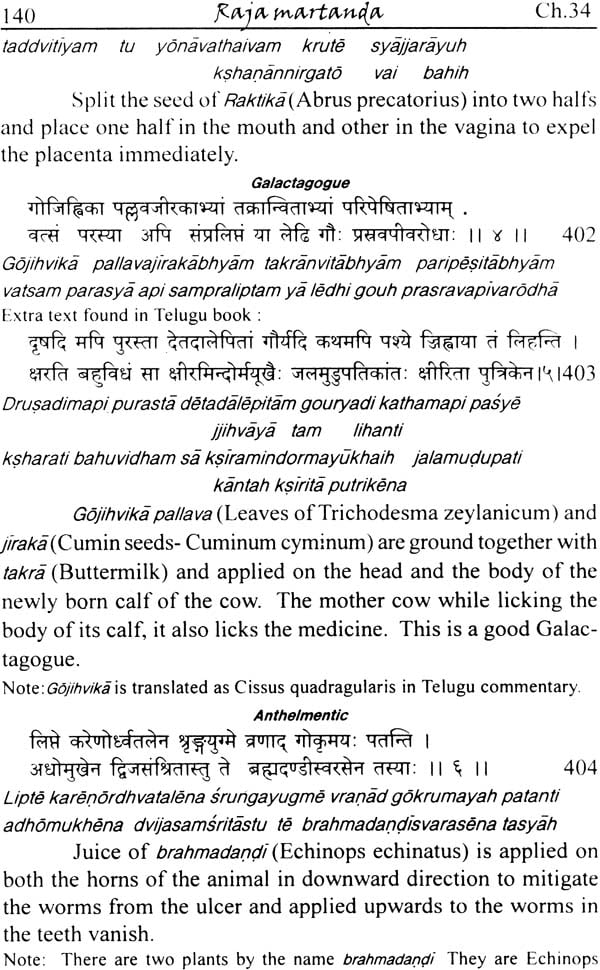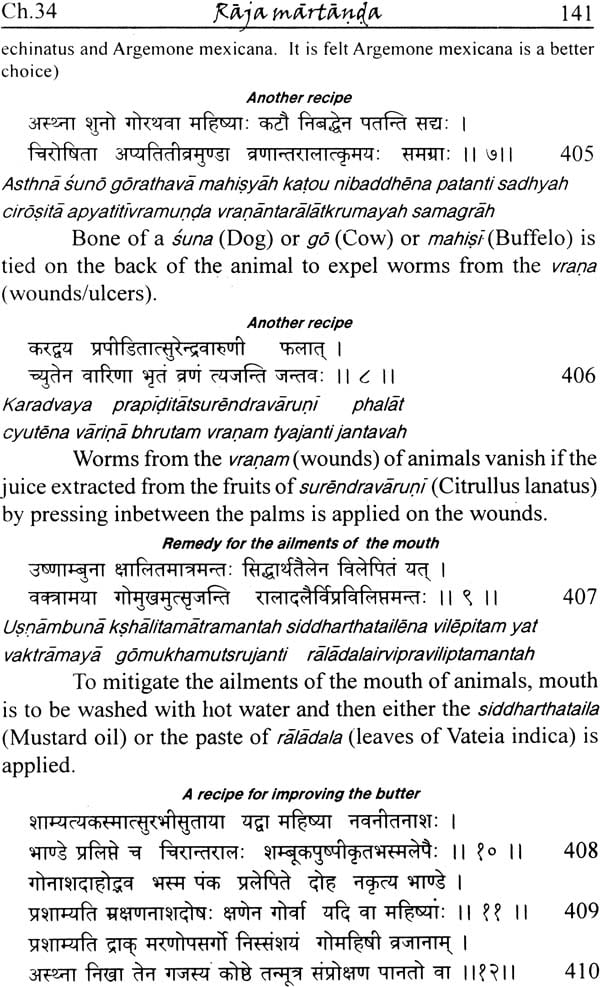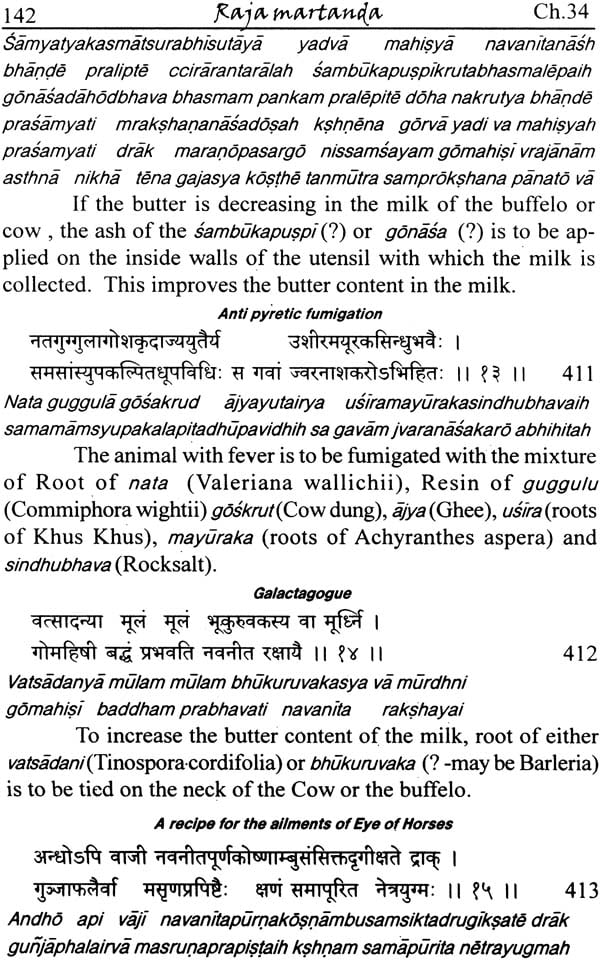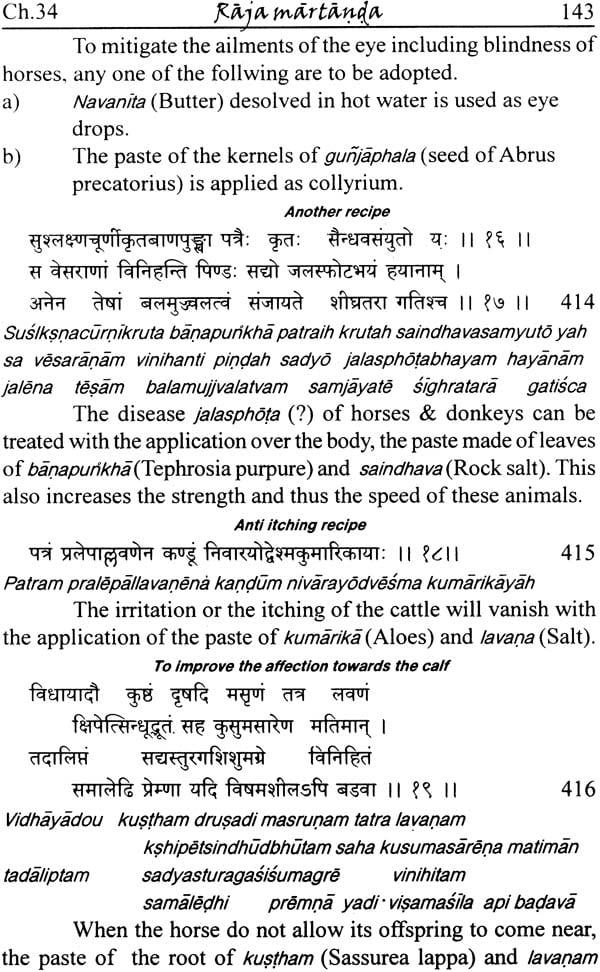
Raja Martanda of Bhoja (Text, Transliteration and English Translation)
Book Specification
| Item Code: | NAD551 |
| Author: | Uttam Vaidya Pammi Satyanarayana Sastry |
| Publisher: | Chowkhamba Krishnadas Academy |
| Language: | (Text, Transliteration and English Translation) |
| Edition: | 2010 |
| ISBN: | 9788121802881 |
| Pages: | 165 |
| Cover: | Paperback |
| Other Details | 8.5 inch x 5.5 inch |
| Weight | 180 gm |
Book Description
Every book has its speciality. Simple remedies for all the ailments, including the house hold animals, simple and acute, faced by the common householder, are presented in this book. Maximum recipes were for the ailments of the House wives, and the next was for poisonous bites faced by the common man. Next preference was given to the ailments of the head. The minimum recipe is as low as one in Raktapitta faced rarely. The author being the King, he could collected as many recipes as possible of prooven efficacy.
There are 28 names of herbs which are not common. Prob- ably they may belong to that region where the book is written. It cannot be ruledout that the author being King Bhoja, would have selected such rare synonyms to show off his expertise over the language.
A suggestion to Researchers
There are very few similar books with simple and easy remedies like Yoga Satakam of Vararucietc.. Thease are to be studied in detail comparing Vrtddhatraya and Laghu traya and identify the original contribution of King Bhoja and those recipes be named after him as a token of our tribute.
I present this english translation, duly comparing the varient readings with Telugu commentary, with the little knowl- edge I have, for the benefit of all ayurvedic fraternity here and abroad. The latin equivalents of the herbs and of the diseases were taken from the books noted in the" Books consulted". Hope this will receive attention of all the practitioners of Ayurveda.
It is hoped that Practitioners of Ayurveda prepare at least few of these recipes, use them and prove the efficacy once again in the present cost of Globalisation of Ayurveda.
| Dedication | 3 |
| Prologue | 4 |
| Cnepterwise stanzas | 5 |
| Key to transliteration | 6 |
| Books consulted | |
| Index | 7 |
| Explanatory notes on technical words | 12 |
| Explanatory notes on difficult herbs | 13 |
| Numbering of stanzas | 14 |
| Chapter 1: Ailments of the head | 15 |
| Chapter -2: Ailments of the Ear 25 | 25 |
| Chapter 3: Eye Diseases | 32 |
| Chapter 4 : Nasal diseases | 39 |
| Chapter 5: Ailments of the Face | 40 |
| Chapter 6: Breast diseases | 51 |
| Chapter 7 : Diseases of Stomach | 53 |
| Chapter 8 :Skin diseases | 56 |
| Chapter 9 : Haemorrhagic diseases | 63 |
| Chapter 10: Rhinitis & Hoarseness of voice | 64 |
| Chapeter 11: Cough & Breathlessness | 65 |
| Chapter 12: Consumption/ Tuberculosis | 66 |
| Chapter 13: Pains | 68 |
| Chapter 14: Diarrhoea | 70 |
| Chapter 15: Urinary Disorders | 70 |
| Chapter 16 : Urinary Calculi & Disurea etc | 71 |
| Chapter 17: Hydrocele & Veneriats etc | 72 |
| Chapter 18: Fistula | 74 |
| Chapter 19: Piles | 75 |
| Chapter 20: Vomiting & Thirst | 78 |
| Chapter 21: Fevers | 79 |
| Chapter 22 : Vata Diseases | 86 |
| Chapter 23: Diseases of the foot | 88 |
| Chapter 24: Keloids etc. | 89 |
| Chapter 25: Burns | 90 |
| Chapter 26: Wounds | 91 |
| Chapter 27: Treatment for Cystitis | 96 |
| Chapter 28: Epilepsy and Mania | 97 |
| Chapter 29: Toxicology | 99 |
| Chapter 30 : Kshudra rogas | 110 |
| Chapter 31: Diseases of woman | 112 |
| Chapter 32: Padiatrics | 128 |
| Chapter 33: Elixirs & Asphrodisiacs | 134 |
| Chapter 34: Diseases of animals | 139 |
